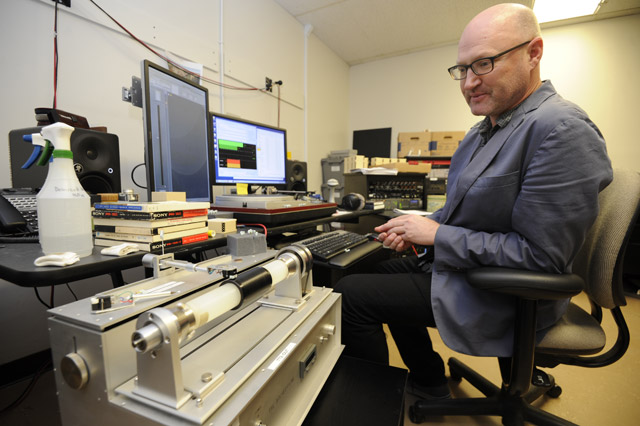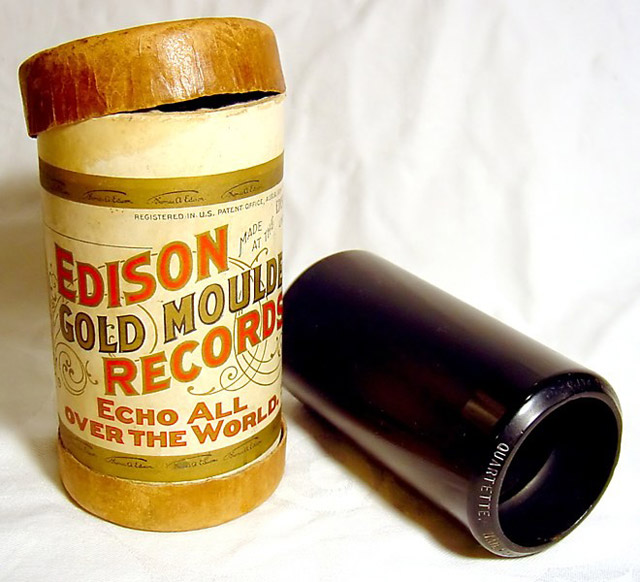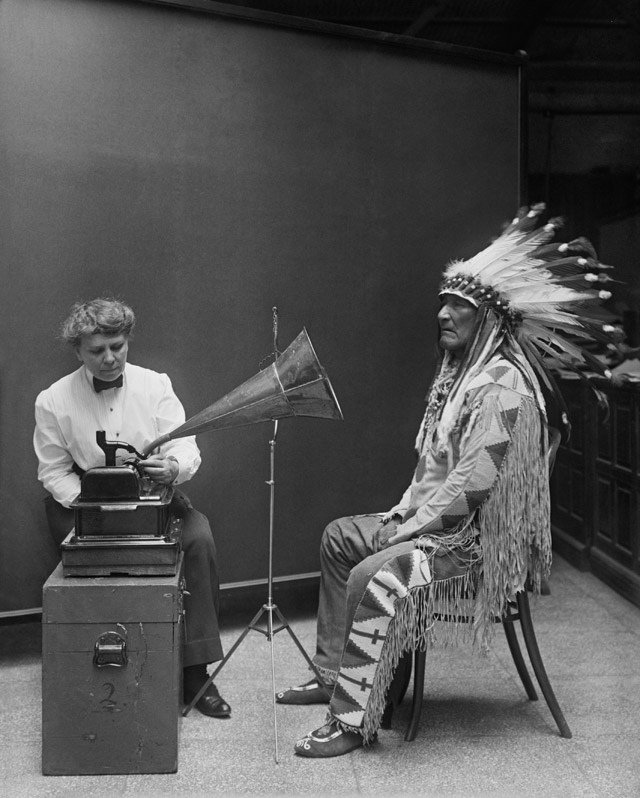UCSB’s Cylinder Audio Archive Offers a Listen into the Past
Digital Downloads of Wax Recordings Reveal Audio Entertainment of the Early 20th Century

“Mary Ann just put on your brand-new bonnet / Mary Ann wear the dress with shamrocks on it,” croons Billy Murray in a discernible brogue. The song, “Are you coming Out To-Night Mary Ann,” is an Irish pop serenade, and Murray’s voice comes across strong and clear. What makes this tune compelling, however, isn’t the singer’s timbre or the song’s lyrics and melody — it’s the fact that it was recorded and released in 1906 and that I’m listening to it via the Internet.
The ditty is just one of thousands of turn-of-the-century recordings available online for public consumption thanks to the UCSB Cylinder Audio Archive (cylinders.library.ucsb.edu/index.php). In 2002, David Seubert, curator of the university’s Performing Arts Collection, looked into digitizing UCSB’s collection of celluloid and wax recordings. “As a pilot project, we decided to catalog and make streaming audio files of 60 cylinders available via the web,” he explained.

The feat was achieved using the library’s Archeophone, which was designed in 1998 by Frenchman Henri Chamoux to convert the information buried in the grooves of the wax apparatus into digital data. The venture was a success and encouraged Seubert to seek grant funding to translate the remaining 7,000 cylinders. In the autumn of 2005, the Audio Archive website launched and included 5,000 newly digitized recordings.
In the last 10 years, the archive has grown into a globally used service. “We were the first library with a big collection of early sound recordings online that the public could download,” declared Seubert. “Since then, it’s just snowballed. The collection has tripled in size — there are almost 16,000 recordings in the collection and close to 11,000 of them are online. And they keep coming in. We are kind of the go-to place for all over the world.”
Site visitors find an incredible window into what folks were listening to in the late 1800s and early 1900s. There is an array of genres to peruse — from pop, classical, and opera music to vaudeville acts, comedy sketches, foreign recordings, speeches, and readings. The site also features a brief history of the wax cylinder, which made its public debut in 1889 and reigned supreme in the recorded sound market until after WWI, when flat discs, which had been around since the invention of the cylinder, became the format of choice.
“The wax technology isn’t any different than what’s on the flat record; it’s sort of like VHS versus Betamax,” Seubert told me. “[There were] these two different technologies, [and] one was a cylinder. So you would have played this on a machine with a big horn [a phonograph]. You’d crank it up, and you’d put the stylus down. In this case,” Seubert continued, holding up a wax cylinder and unpackaging it for inspection, “there is a [identifier] tag inside [that reads]: ‘This is Miss Morgan and Mr. Stanley doing a piece called ‘In the Starlight.’”
Before 1907, the musicians were announced at the beginning of the “canned music.” “When they go into the recording session, everyone sits around the horn, and they say, ‘Miss Morgan and Mr. Stanley singing “In the Starlight,” Edison Records,’” Seubert demonstrated using an old-timey voice. “But oftentimes [the tags] are lost, so [we] have to listen to it” to determine who is on it, which translates to archaeological-type research for the collections staff.

The exacting, often tedious work of cataloging and digitizing the old formats — which also includes 200,000 78 rpm discs (“There are more records here than any place on the West Coast,” according to Seubert) — had been done on the third floor of UCSB’s Davidson Library in a small, warren-like room piled with books, papers, records, and cylinders. The archival space itself was also cramped with a low ceiling and not enough room to house all of the recordings.
But with the completion of the new library wing, the entire Collections Department has moved into a state-of-the-art building with climate control and organizational storage fitting of the quality and status of the recordings, documents, film, and artwork in its possession.



